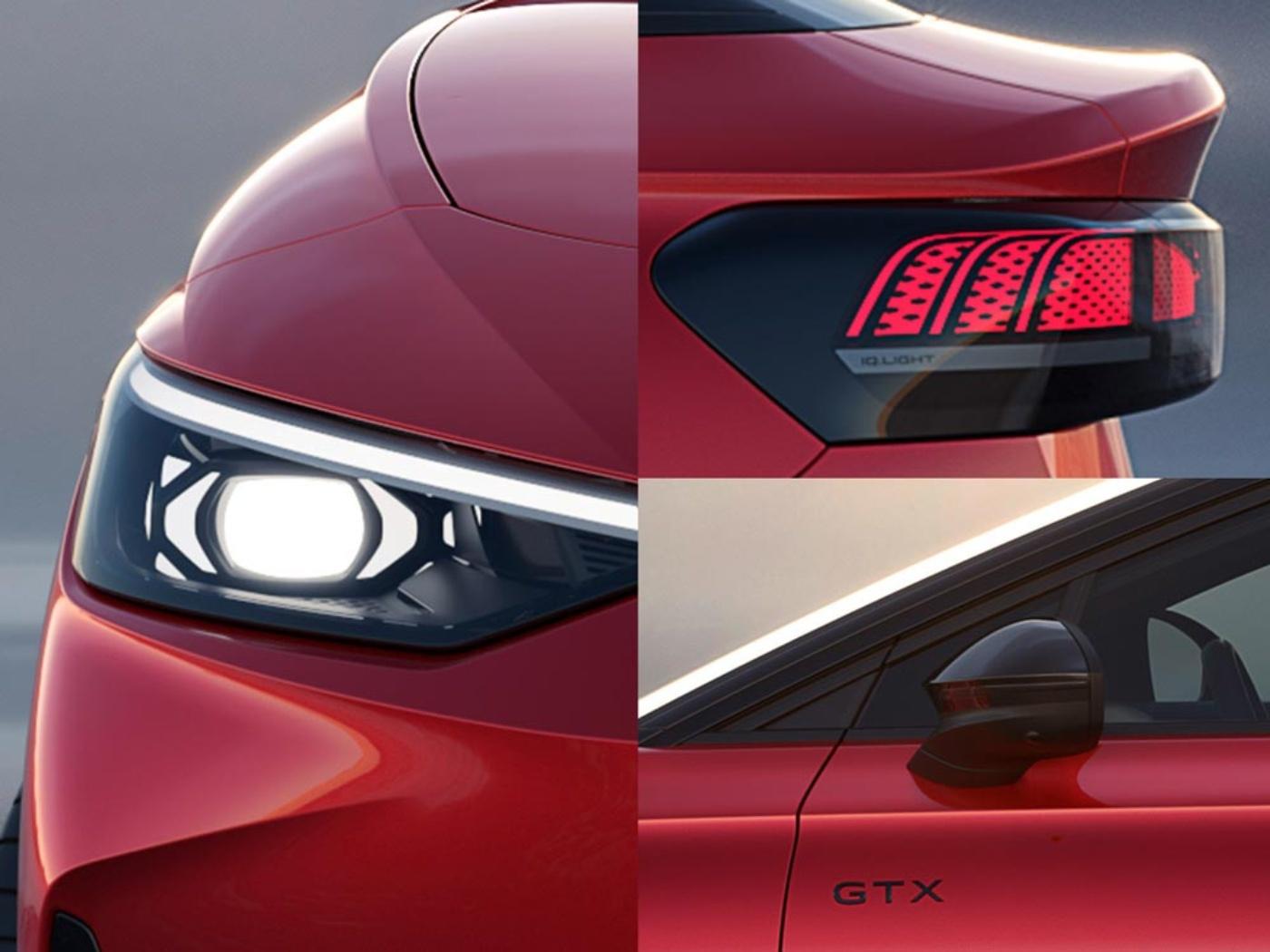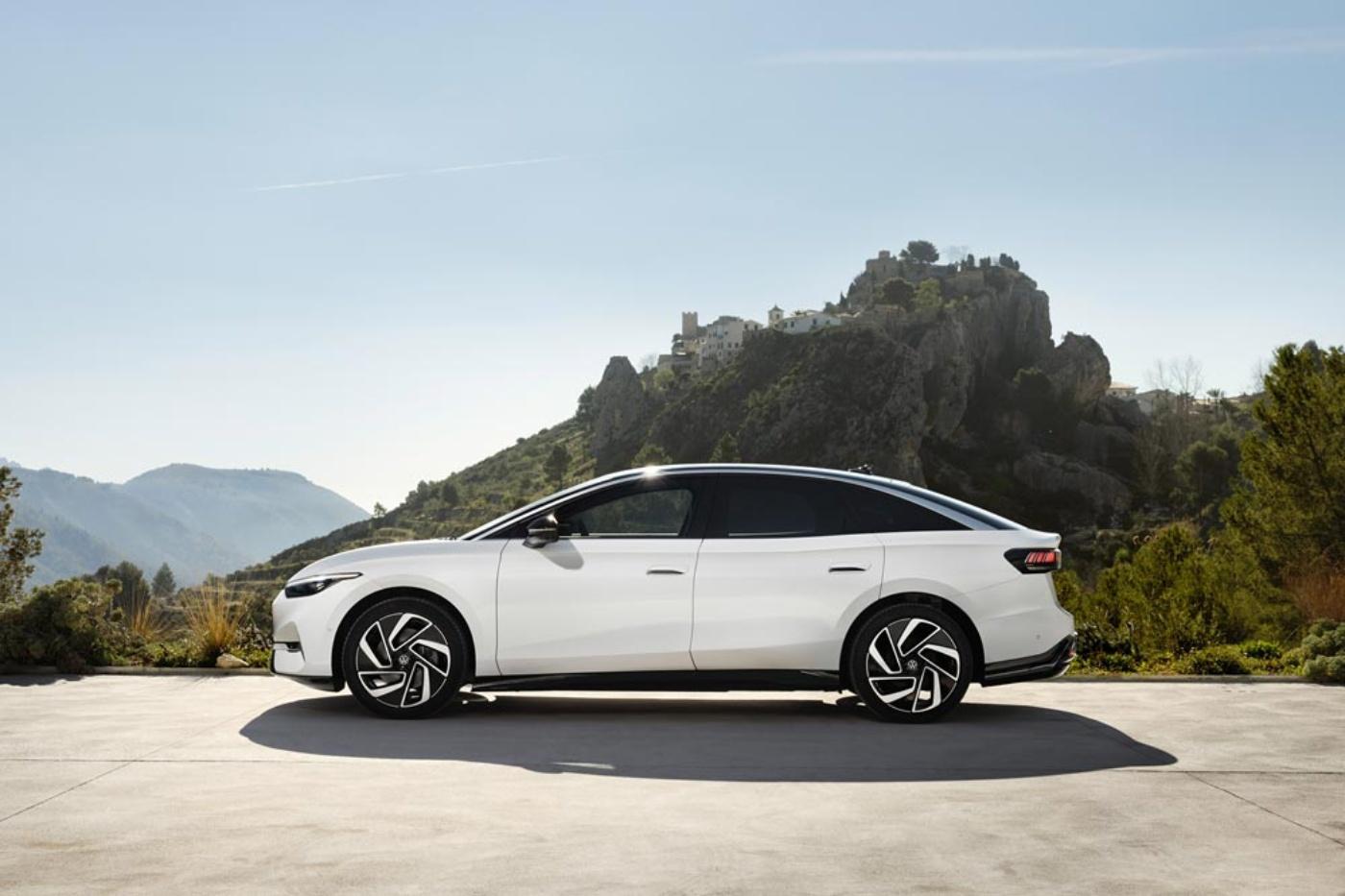
E-vehicle
World premiere of the ID.7 GTX at the IAA MOBILITY 2023
Just a few weeks ago, Volkswagen unveiled the ID.7, the all-electric sedan for the upper midsize class. Now the automaker has announced the sporty GTX model for late summer. The ID.7 GTX will make its debut in September at IAA MOBILITY (September 5-10, 2023) in Munich and will be Volkswagen's third GTX model after the ID.4 and ID.5.
GTX models unites electric mobility, sustainability and intelligent sportiness

Volkswagen's GTX models combine electric mobility, sustainability and intelligent sportiness. Equipped with the latest drive generation of the ID. models, the dual-motor all-wheel drive, the Wolfsburg-based company aims to combine efficiency, dynamics and driving stability. The Driving Dynamics Manager software developed by Volkswagen intelligently controls the dual-motor all-wheel drive as well as all braking, steering and suspension control systems in the long-distance sedan, depending on the selected driving profile. It was already used in the previous GTX models, the ID.4 and ID.5. Comfort and sportiness are also guaranteed by the further development of the chassis and steering of the long-distance sedan, which is based on Volkswagen's modular e-drive system (MEB).
ID.7 as a comfortable touring sedan
With the new ID.7, Volkswagen has already presented the brand's first global electric model for the upper mid-size segment a few weeks ago. The five meter (16.4 feet) long model is to be launched in Europe and China this year, and in North America from 2024.
With its comfortable interior and premium technologies, the goal is to establish the ID.7 as the touring sedan of the ID. family, the Wolfsburg-based company explained. With WLTP ranges of up to 700 kilometers (435 miles) and 210 kW (286 hp), it was the most powerful and torquey e-model in the current ID. family to date and the first MEB model with an entirely new generation of powertrains announced by Volkswagen. WLTP ranges of up to 700 kilometers (435 miles) and charging capacities of up to 200 kW are predicted, depending on battery size. The power unit with its internal name APP550 is to offer more power with improved efficiency from now on.
New drive generation provides more power with improved efficiency at the same time

In the new generation of drives, the design of the integrated motor housing, integrated pulse inverter, rotor, stator, cooling jacket, gearbox and gearbox housing has remained the same. However, all components have been further developed. An improved stator with a high effective number of windings and a larger wire cross-section enables the electric vehicle to achieve high torque. Thinner and optimized laminated core packages further increase efficiency. At the same time, stronger and more resilient permanent magnets are used, and the pulse inverter has also been adapted. Further efficiency gains are achieved through thermal management. The drive cooling system no longer uses an electrically driven oil pump, but is cooled by the gearwheels and specially shaped oil transfer and distribution components. The stator also has a water-cooling jacket. Moreover, there are classical engineering optimizations - from polished, specially shaped helical gears that reduce losses in the gearhead to a friction-optimized bearing in the gearhead housing.
Volkswagen to launch ten new e-cars by 2026
The new ID.7 is one of ten new e-models that the Volkswagen brand will launch by 2026. In addition to the ID.7, the new ID.3 and the ID. Buzz with long wheelbase. In 2026, Volkswagen also plans to launch an electric compact SUV and the production version of the ID. 2all. By 2026, Volkswagen promises to offer the broadest e-portfolio of any manufacturer. By 2030, the company aims to achieve an 80 percent share of e-cars in Europe. From 2033, Volkswagen intends to produce only e-cars in Europe.